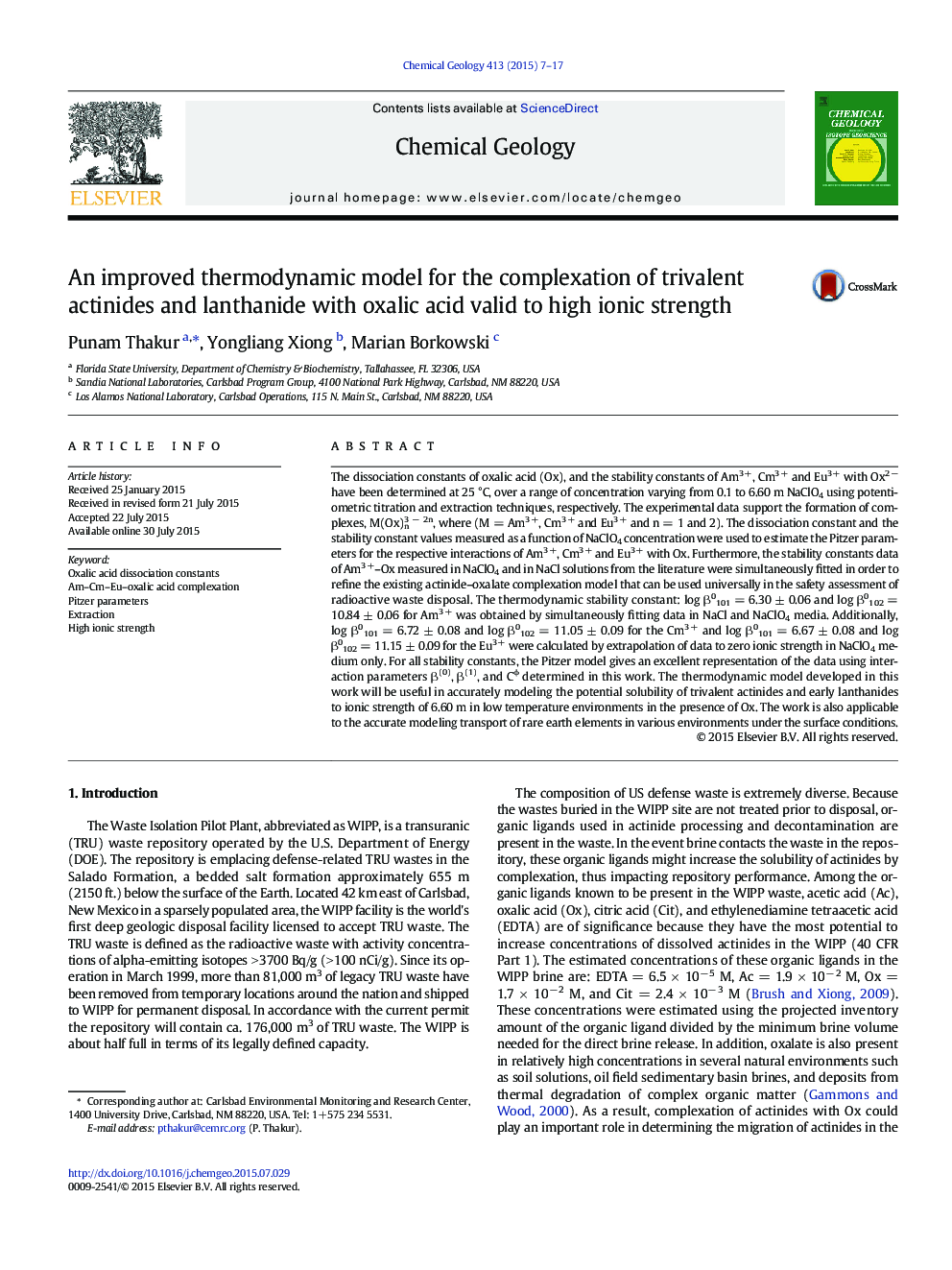| Article ID | Journal | Published Year | Pages | File Type |
|---|---|---|---|---|
| 4698462 | Chemical Geology | 2015 | 11 Pages |
•Dissociation constants of oxalic acid at different ionic strength were measured.•The stability constants of Am3 +, Cm3 + and Eu3 + were determined.•Stability constant data were used to estimate Pitzer parameters.•Pitzer interaction parameters β(0), β(1), and Cϕ were calculated.
The dissociation constants of oxalic acid (Ox), and the stability constants of Am3 +, Cm3 + and Eu3 + with Ox2 − have been determined at 25 °C, over a range of concentration varying from 0.1 to 6.60 m NaClO4 using potentiometric titration and extraction techniques, respectively. The experimental data support the formation of complexes, M(Ox)n3 − 2n, where (M = Am3 +, Cm3 + and Eu3 + and n = 1 and 2). The dissociation constant and the stability constant values measured as a function of NaClO4 concentration were used to estimate the Pitzer parameters for the respective interactions of Am3 +, Cm3 + and Eu3 + with Ox. Furthermore, the stability constants data of Am3 +–Ox measured in NaClO4 and in NaCl solutions from the literature were simultaneously fitted in order to refine the existing actinide–oxalate complexation model that can be used universally in the safety assessment of radioactive waste disposal. The thermodynamic stability constant: log β0101 = 6.30 ± 0.06 and log β0102 = 10.84 ± 0.06 for Am3 + was obtained by simultaneously fitting data in NaCl and NaClO4 media. Additionally, log β0101 = 6.72 ± 0.08 and log β0102 = 11.05 ± 0.09 for the Cm3 + and log β0101 = 6.67 ± 0.08 and log β0102 = 11.15 ± 0.09 for the Eu3 + were calculated by extrapolation of data to zero ionic strength in NaClO4 medium only. For all stability constants, the Pitzer model gives an excellent representation of the data using interaction parameters β(0), β(1), and Cϕ determined in this work. The thermodynamic model developed in this work will be useful in accurately modeling the potential solubility of trivalent actinides and early lanthanides to ionic strength of 6.60 m in low temperature environments in the presence of Ox. The work is also applicable to the accurate modeling transport of rare earth elements in various environments under the surface conditions.
Graphical abstractFigure optionsDownload full-size imageDownload as PowerPoint slide
